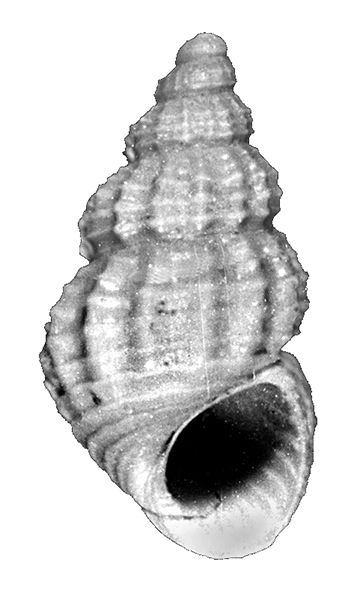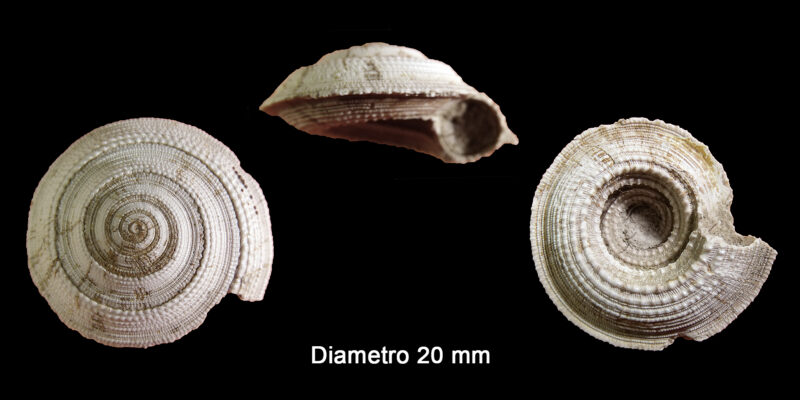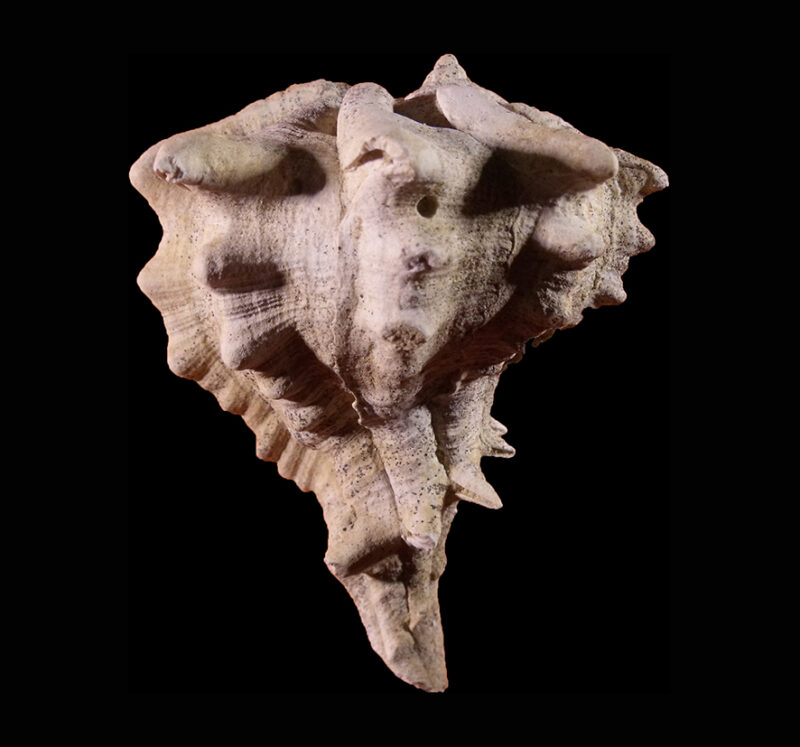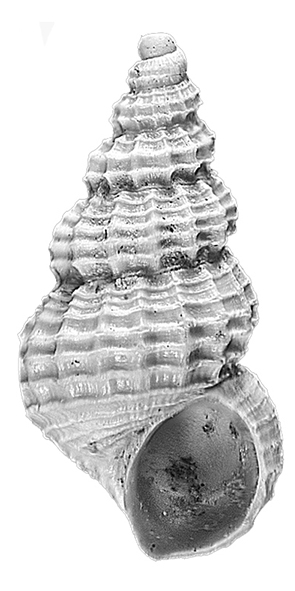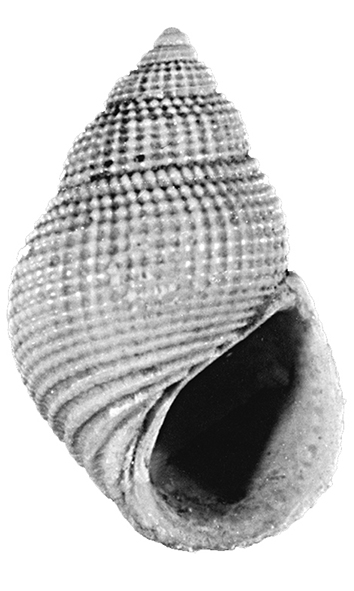Class Gastropoda Cuvier, 1795
Family Rissoidae Gray, 1847
Genus Alvania Risso, 1826
Species Alvania thalia De Stefani & Pantanelli, 1878
Alvania thalia De Stefani & Pantanelli, 1878
Very common in the surroundings of San Gimignano (Siena), in yellow sands. Pliocene (Piacenzian).
Gastropoda Rissoidae Alvania Alvania thalia Pliocene
Original Description – Descrizione originale
Testa elongata, ovata: anfractus 5-6 convexi, suturis sat profundis distincti, longitudineliter costati, (costae 12-14 rectae, ad basim anfractus ultimi evanescentes), transversim lineis elevatis circa decem in ultimo anfractus, 4-5 in penultimo cincti: apertura ovata, superne acutiuscula; labrum externum incrassatum, intus interdum striatus, labrum columellare tenue, reflexum. Alt. 2ʹʹʹ9, Larg. 1ʹʹʹ8.
Questa specie è piuttosto variabile; qualche volta predominano le strie trasversali e qualche volta sono quasi sole le longitudinali. È intermedia alla Rissoa lachesis Bast., e alla R. moulinsi Mtg., e le sue modificazioni sono parallele a quelle della prima specie; differisce però dalla A. moulinsi per le suture più profonde e per i giri più convessi, come pure per il labbro dell’apertura non così profondamente striato; differisce dalla Rissoa lachesis per le strie trasversali più manifeste, per l’apertura più rotonda e per la forma sopraindicata dei giri. La sua variabilità deriva forse dall’avere vissuto entro acque salmastre. Più che alla vivente A. montagui Payr., cui taluno l’ha attribuita, somiglia molto alla A. lineata Risso, pure vivente, dalla quale differisce per la statura più piccola, per le costole longitudinali che di solito non arrivano fino alla base, e perché le strie trasversali alla base sono più fitte, e sono due o tre di più che nella specie vivente.
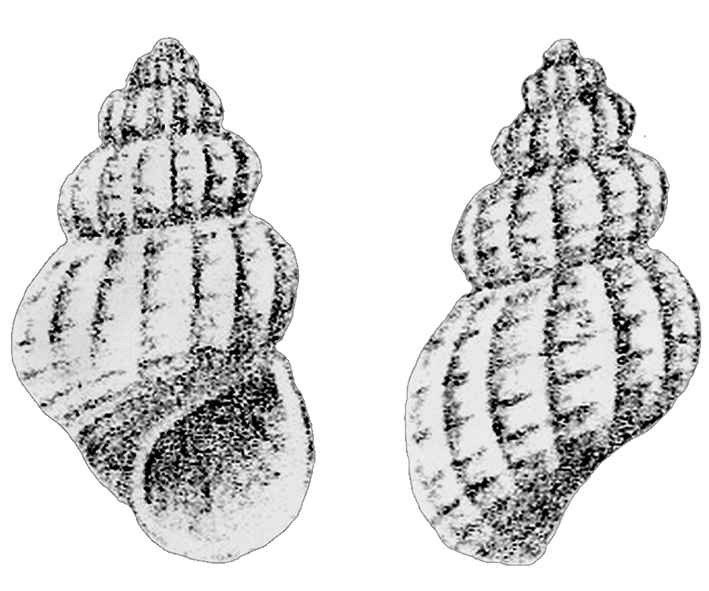
Shell ovoid conical with a rather tall spire which is 60 to 66% of shell height and has a blunt apex. Protoconch bulbous of 1,75 convex whorls, with a large, slightly deviated nucleus. It is covered by dense granules which tend to be aligned in spiral rows. The transitions to teleoconch is abruptly marked by a change of ornamentation and enhanced by the presence of a faint, slightly prosocline varix. Teleoconch whorls convex, with some adapical flattening, and with the periphery a little below the middle of the height. Sutures straight, some what impressed. Body whorl almost globular, 63% of shell height, rather rapidly tapering at the base. Aperture oval, relatively small, angulated adapically and rounded abapically. The thin edged outer lip arises well below the periphery of body whorl, at level of spiral 4-5. It is slightly opistocyrt adapically and follows a semicircular course to the end of columella which is short. There is a broad, somewhat flattened varix. The inner side bears, a little deep in the aperture, about ten irregular ridges which are subobsolete or missing in some shells. The inner lip is gently arched, slightly disjoined abapically and slightly everted over a quite narrow umbilical chink. The latter can be completely hidden in some specimens.
The teleoconch ornamentation start whith 2 spiral ridges followed almost immediately by faint collabral ribs. The collabral ribs, 18-20 on the first whorl, reduce the number during growth, being 13-15 on the penultimate. They increase in strength, are straight and as wide as one half of the intervening spaces. The first appeared spiral ridges respectively lie in the middle of the whorl and close to abapicale suture. A third ridge develops in between after nearly 1 whorl and quickly reaches the same size of the others two. At the same stage, a very faint cord appears close to adapical suture and persists on all whorls. As additional ridge rise from adapical suture on the penultimate whorl. The body whorl bears 6-7 spirals and 10-12 ribs which die out at level of spiral 5. The adapical half of the base is generally smooth. Both spiral and collabral ornaments usually fade away on the youngest part of the whorl. Low nodosities are observed where spiral ridges cross ribs. The whole shell, except for the abapical half of the base, is covered with an obscure spiral striation intersected by growth lines (Bernasconi & Robba, 1994).
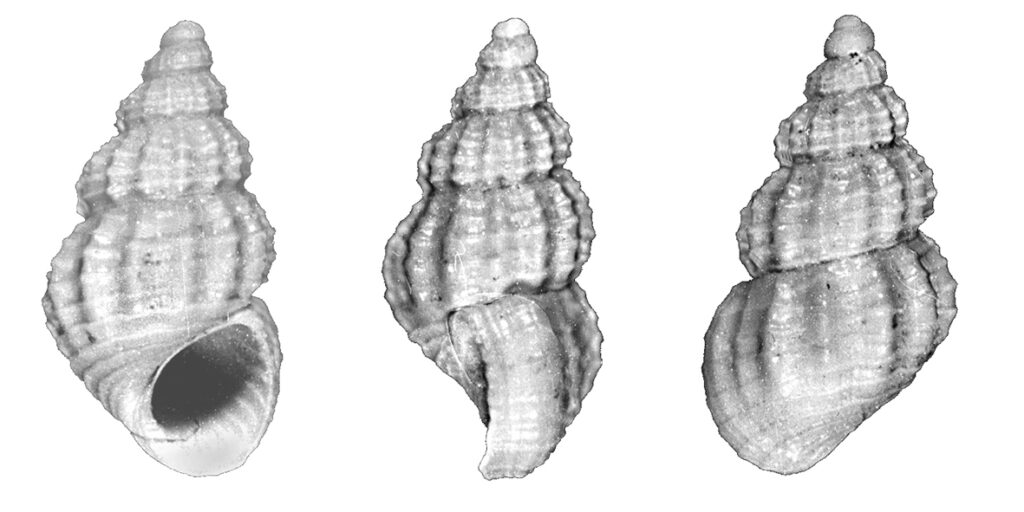
SEM – Protoconca formata da giri 1,7, ornati da numerose papille unite irregolarmente fra loro in gruppi di 4-6 in senso spirale. Osservata con un ingrandimento modesto, la protoconca, sembra percorsa da 12-14 strie spirali granulose e ondulate a tratti interrotte (Chirli).
Protoconch, about 1.7 whorls, with numerous papillae joined irregularly together, in groups of 4-6 in a spiral sense. Observed with a modest magnification, the protoconch, seems to have 12-14 grainy and undulating spiral striae, sometimes interrupted.
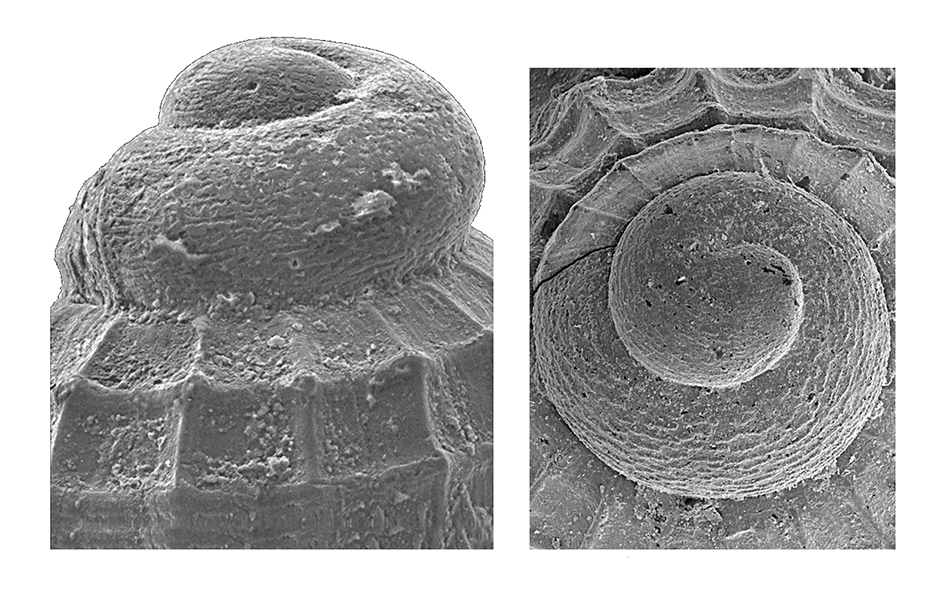
Bibliographic references and some more common synonyms
1878 Alvania thalia – De Stefani & Pantanelli, p. 172
1888 Alvania thalia – De Stefani, p. 50, pl. 11, figs 36-37
1895 Alvania (Alvaniella) thalia v. exbrevis – Sacco, p. 25, fig. 59
1895 Alvania (Alvaniella) thalia v. subcingulata – Sacco, p. 26, fig. 60
1994 Alvania (Alvania) thalia – Bernasconi & Robba, p. 77, pl. 3, figs 2-4
2006 Alvania thalia – Chirli, p. 36, pl. 18, figs 1-9
2021 Alvania thalia – Chirli & Forli, p. 181, pl. 147, figs B1-13
Stratigraphic distribution
Pliocene of Tuscany, Emilia and Piedmont. Pleistocene of Tuscany.
References
Chirli C. (2006). Malacofauna Pliocenica Toscana – Caenogastropoda. Vol. 5, pp. 144, 46 Plates.
Acknowledgements
Si ringrazia l’amico Carlo Chirli (Tavarnelle, Firenze) per la concessione all’uso di alcuni suoi testi. See also Edizioni Danaus.

